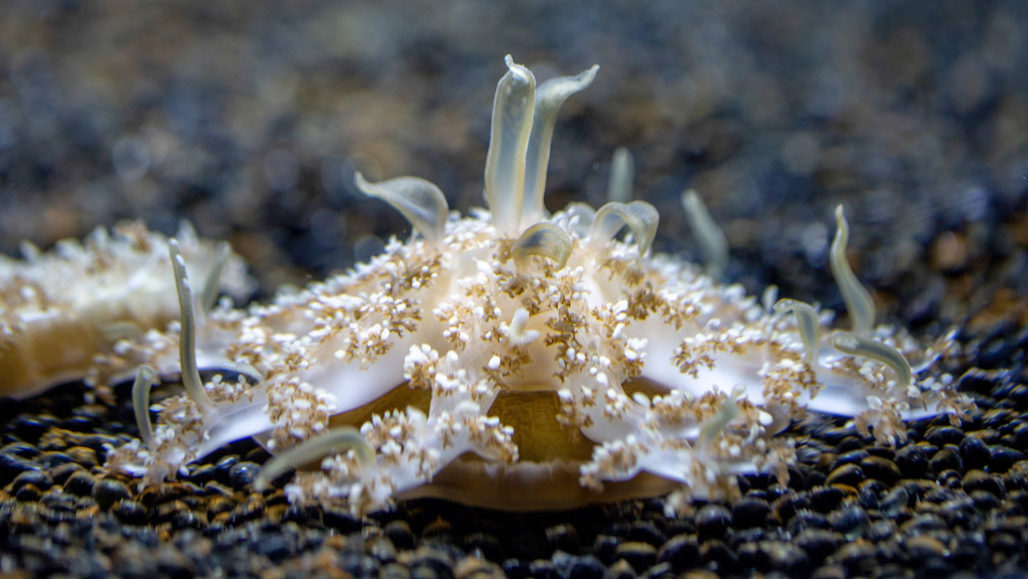algae: Single-celled organisms, once considered plants (they aren’t). As aquatic organisms, they grow in water. Like green plants, they depend on sunlight to make their food.
biology: The study of living things. The scientists who study them are known as biologists.
brine: Water that is salty, often far saltier than seawater.
cassiosome: Small hollow structure covered with stinging cells that can be found in some jellyfish mucus.
cell: The smallest structural and functional unit of an organism. Typically too small to see with the unaided eye, it consists of a watery fluid surrounded by a membrane or wall.
defense: (in biology) A natural protective action taken or chemical response that occurs when a species confronts predators or agents that might harm it. (adj. defensive)
embryo: The early stages of a developing organism, or animal with a backbone, consisting only one or a few cells. As an adjective, the term would be embryonic — and could be used to refer to the early stages or life of a system or technology.
forest: An area of land covered mostly with trees and other woody plants.
mangrove: A type of shrub or tree that lives mostly in coastal swamps and usually has long, tangled, above-ground roots.
marine: Having to do with the ocean world or environment.
marine biologist: A scientist who studies creatures that live in ocean water, from bacteria and shellfish to kelp and whales.
microscopic: An adjective for things too small to be seen by the unaided eye. It takes a microscope to view objects this small, such as bacteria or other one-celled organisms.
mucus: A slimy substance produced in the lungs, nose, digestive system and other parts of the body to protect against infection. Mucus is made mainly of water but also includes salt and proteins such as mucins. Some animals use mucus for other purposes, such as to move across the ground or to defend themselves against predators.
nematocyst: Stinging cells in the tentacles of jellyfish, hydra and related animals. The toxins released by these cells help immobilize prey and ward off attackers.
nutrient: A vitamin, mineral, fat, carbohydrate or protein that a plant, animal or other organism requires as part of its food in order to survive.
organism: Any living thing, from elephants and plants to bacteria and other types of single-celled life.
parasite: An organism that gets benefits from another species, called a host, but doesn’t provide that host any benefits. Classic examples of parasites include ticks, fleas and tapeworms.
photosynthesis: (adj. photosynthetic) The process by which green plants and some other organisms use sunlight to produce foods from carbon dioxide and water.
predator: (adjective: predatory) A creature that preys on other animals for most or all of its food.
species: A group of similar organisms capable of producing offspring that can survive and reproduce.
strategy: A thoughtful and clever plan for achieving some difficult or challenging goal.
theory: (in science) A description of some aspect of the natural world based on extensive observations, tests and reason. A theory can also be a way of organizing a broad body of knowledge that applies in a broad range of circumstances to explain what will happen. Unlike the common definition of theory, a theory in science is not just a hunch. Ideas or conclusions that are based on a theory — and not yet on firm data or observations — are referred to as theoretical. Scientists who use mathematics and/or existing data to project what might happen in new situations are known as theorists.
tissue: Made of cells, it is any of the distinct types of materials that make up animals, plants or fungi. Cells within a tissue work as a unit to perform a particular function in living organisms. Different organs of the human body, for instance, often are made from many different types of tissues.








